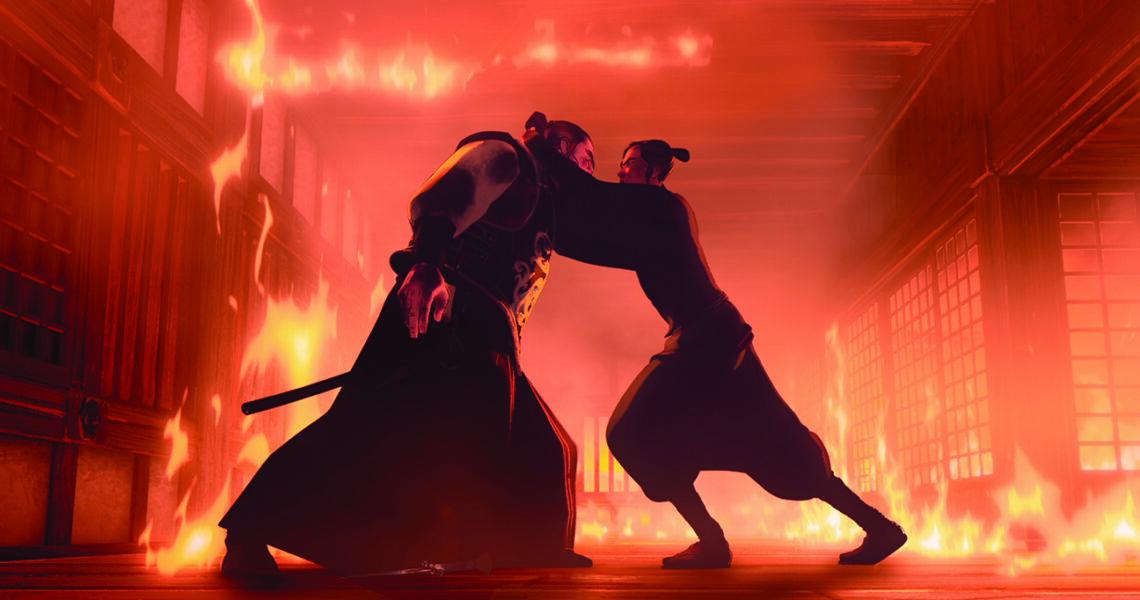The Realistic Magic Behind the Animation Series “Blue Eye Samurai”
For a global animation space where Japanese anime dominates, Blue Eye Samurai creators Michael Green and Amber Noizumi looked to stand out from the crowd early on with their Netflix series about a female swordmaster on a bloody revenge quest in Edo-period Japan.
Their approach caught the eye of Emmy voters after Blue Eye Samurai earned two noms for outstanding animated program and outstanding sound editing for an animated comedy or drama series. Ahead of a second season, Green says that, in style and ambition, their series has aimed beyond the peals of clashing swords and blood splattering on brutish warriors and toward a style of vivid animation with a live-action attitude to target adult fans of Games of Thrones or The Crown.
“The goal was that people would forget they’re watching animation entirely, that they wouldn’t be thinking, ‘How is this accomplished on a technical level?’ but rather realize that these characters became real, as if they resembled live-action actors,” says Green.
Green and Noizumi partnered with supervising director Jane Wu — a veteran storyboard artist on movies like Mulan and Spider-Man: Across the Spider-Verse and the Game of Thrones TV series — and studio Blue Spirit to bring their script to animated life. Wu, a fan of anime, wanted to move beyond traditional 2D animation, or the look of a video game or Pixar animated story.
“We had to tread this fine line between [computer generation] and anime, two things people know well and love, and find a unique avenue for ourselves,” says Wu, who looked to Japan’s Bunraku puppet theater, which uses half-life-size dolls, to tell the story of Mizu (voiced by Maya Erskine), a biracial swordmaster on a vengeance quest against four white men who made her a woman of shame for her ice-blue eyes.
Wu adopted what she calls “two-and-a-half-D animation.” “It has a live-action philosophy of camerawork, it has 2D animation and map painting, and it has 3D characters that are designed to look 2D with some of the stylization,” she explains.
Another way to ground the storytelling was to hire a stunt coordinator and focus on live-action camera angles, so the audience feels they’re following characters and their body language in real time.
“The sequences had to feel real, the characters had to feel like they were in danger, and the cameras had to be in the right places to pick up movements,” adds Wu.
For Noizumi, as a woman who struggled with her half-Japanese, half-white identity, the success of Blue Eye Samurai has been satisfying. “I was embarrassed by those feelings for so long,” says Noizumi. “It wasn’t until we put pen to paper that I was able to connect with those emotions, and that people have responded has brought me great pride.”
This story first appeared in an August stand-alone issue of The Hollywood Reporter magazine. To receive the magazine, click here to subscribe.

